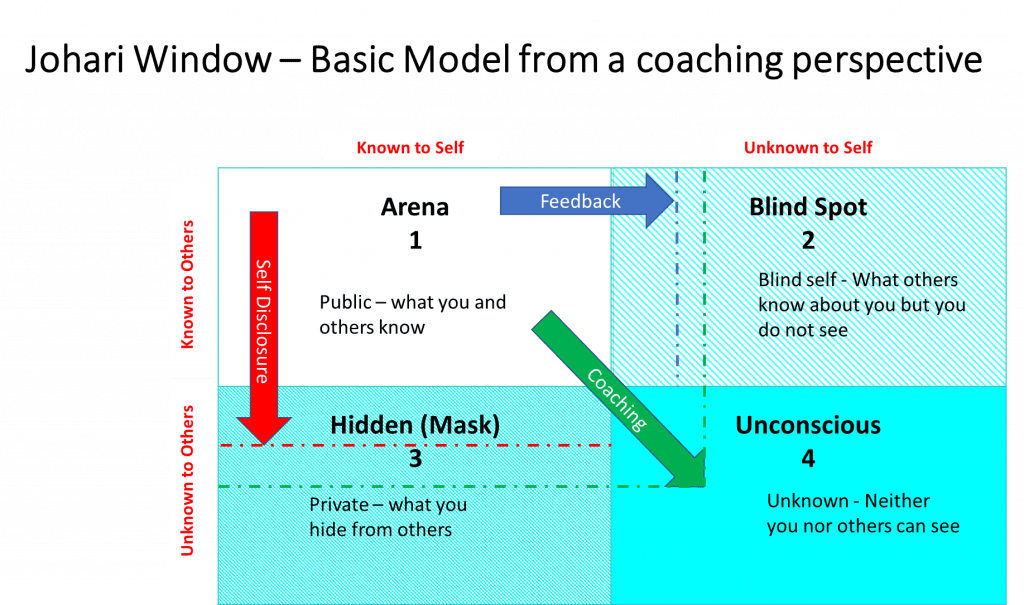Johari window
The Johari Window, developed by American psychologists Joseph Luft and Harry Ingram, helps us to consider different aspects to be explored in the coaching process.
Sometimes it is useful to outline the Johari Window for coachees as it is an excellent graphic model of self-awareness.

| QUADRANT 1 | The area of free activity or public arena refers to behaviour and motivation known to self and known to others. |
| QUADRANT 2 | The blind spot where others can see things in ourselves of which we are unaware and may be damaging us. |
| QUADRANT 3 | The avoided or hidden areas represents things we know but do not wish to reveal to others (e.g. a hidden agenda or matters about which we have sensitive feelings or have built masks for protection). |
| QUADRANT 4 | Areas of unconscious activity, in which neither the coachee nor others are aware of certain behaviours or motives. Yet, we can assume their existence because eventually some of these behaviours and motives have been influencing our relationship all along. |
Coaching is about addressing and enlarging quadrant 1, in a way that reduces quadrants 2, 3 and 4 so that overall awareness of reality is increased, thereby influencing the quality of decision making as the coaching process proceeds.
Giving feedback to the coachee will reduce blind spots and helping the coachee self-disclose will decrease masks that the coachee has developed for self-protection.
Examining the current reality demands a high degree of detachment on behalf of both the coach and client. Intuition also plays a role but is usually considered after gathering the objective data. Jumping into the ‘options’ step prematurely is a temptation that should generally be avoided.

